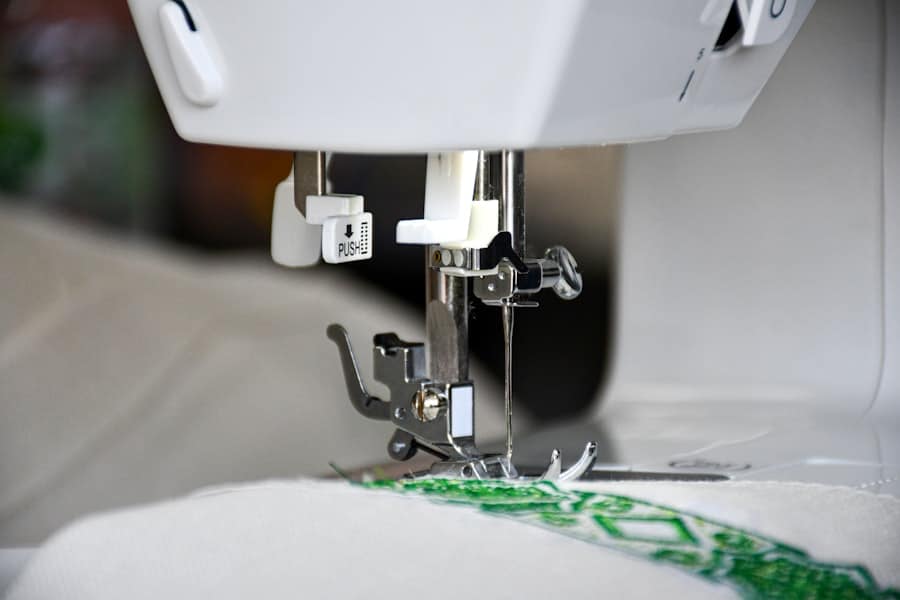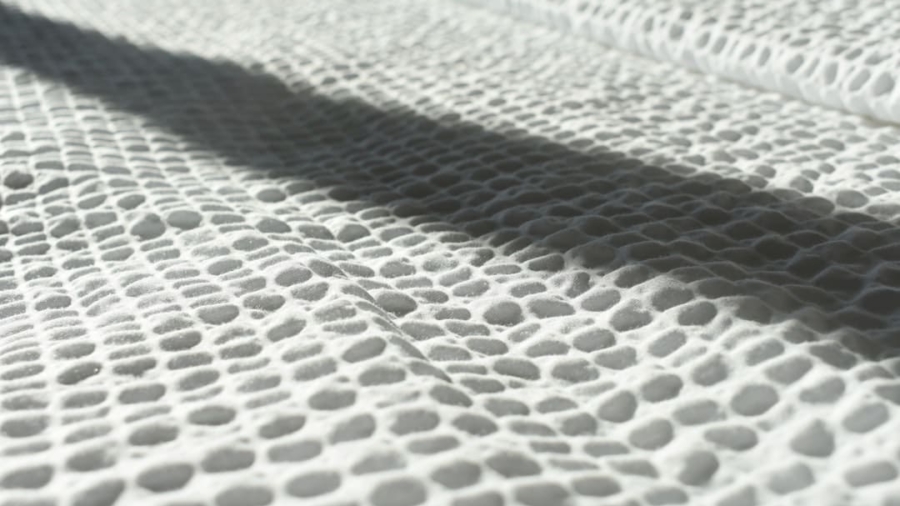The intersection of textiles and technology has given rise to a revolutionary category of materials known as smart fabrics. These innovative textiles are engineered to sense and respond to environmental stimuli, making them integral to the burgeoning field of wearable computing platforms. Smart fabrics can incorporate various technologies, including sensors, actuators, and microcontrollers, allowing them to perform functions that extend far beyond traditional textiles.
This convergence of fashion and function is not merely a trend; it represents a significant shift in how we interact with our clothing and accessories, transforming them into dynamic tools for health monitoring, communication, and even entertainment. Wearable computing platforms leverage smart fabrics to create devices that are not only functional but also seamlessly integrated into daily life. Unlike conventional wearables, which often consist of bulky electronics strapped onto the body, smart fabrics can be woven or knitted into garments, providing a more comfortable and aesthetically pleasing user experience.
This integration allows for continuous data collection and interaction without the need for separate devices, paving the way for a future where our clothing can actively participate in our health and lifestyle management.
Key Takeaways
- Smart fabrics and wearable computing platforms are revolutionizing the way we interact with technology and clothing.
- The evolution of smart fabrics in wearable technology has led to the development of more comfortable, functional, and stylish wearable devices.
- Advantages of smart fabrics in wearable computing platforms include flexibility, breathability, and the ability to integrate sensors and connectivity seamlessly. However, limitations such as durability and cost still exist.
- Sensors and connectivity play a crucial role in smart fabrics, enabling them to collect and transmit data for various applications in health and fitness.
- Smart fabrics are not only limited to health and fitness applications, but also have a significant impact on fashion and entertainment industries, offering new possibilities for interactive and customizable clothing and accessories.
- Despite the advancements, challenges such as washability, power supply, and standardization still need to be addressed for the future development of smart fabrics in wearable computing platforms.
- In conclusion, smart fabrics have the potential to significantly impact the future of wearable technology, offering endless possibilities for innovation and integration into our daily lives.
The Evolution of Smart Fabrics in Wearable Technology
The journey of smart fabrics began in the late 20th century when researchers started exploring the potential of integrating electronic components into textiles. Early iterations were primarily focused on military applications, such as uniforms that could monitor soldiers’ vital signs or provide environmental feedback. As technology advanced, the scope of smart fabrics expanded to include consumer applications, driven by the increasing demand for health monitoring and fitness tracking solutions.
In the 2000s, significant breakthroughs in materials science and electronics led to the development of more sophisticated smart fabrics. Companies like DuPont and Philips began experimenting with conductive fibers and flexible electronics, resulting in textiles that could not only sense but also respond to various stimuli. The introduction of Bluetooth and other wireless communication technologies further enhanced the capabilities of smart fabrics, enabling real-time data transmission to smartphones and other devices.
This evolution has culminated in a diverse range of products, from fitness apparel that tracks heart rate to smart socks that monitor foot pressure, showcasing the versatility and potential of smart fabrics in wearable technology.
Advantages and Limitations of Smart Fabrics in Wearable Computing Platforms

Smart fabrics offer numerous advantages that make them appealing for use in wearable computing platforms. One of the most significant benefits is their ability to provide continuous health monitoring without the discomfort associated with traditional devices. For instance, garments embedded with sensors can track vital signs such as heart rate, temperature, and even hydration levels without requiring users to wear additional devices.
This seamless integration encourages more consistent use, leading to better health outcomes. Moreover, smart fabrics can enhance user experience through their adaptability. They can be designed to change properties based on environmental conditions or user preferences.
For example, some smart textiles can regulate temperature by adjusting their insulation properties in response to body heat or external temperatures. However, despite these advantages, there are limitations that must be addressed. The durability of smart fabrics is a significant concern; frequent washing and wear can compromise the functionality of embedded electronics.
Additionally, the cost of production remains high, which can limit accessibility for consumers.
The Role of Sensors and Connectivity in Smart Fabrics
At the heart of smart fabrics are sensors that enable them to collect data about the wearer and their environment. These sensors can measure a variety of parameters, including motion, temperature, humidity, and even biochemical markers like sweat composition. For instance, accelerometers embedded in a fabric can track movement patterns during exercise, providing valuable insights into performance and technique.
Similarly, temperature sensors can help monitor body heat during physical activity or in extreme weather conditions. Connectivity is another crucial aspect of smart fabrics. Many wearable computing platforms rely on wireless technologies such as Bluetooth or Wi-Fi to transmit data from the fabric to smartphones or cloud-based applications.
This connectivity allows users to access real-time information about their health metrics or receive alerts based on specific thresholds. For example, a smart shirt equipped with heart rate monitors can send notifications to a user’s phone if their heart rate exceeds a predetermined limit during exercise. This integration of sensors and connectivity not only enhances functionality but also empowers users to take proactive steps toward managing their health.
Applications of Smart Fabrics in Health and Fitness
The health and fitness sector has been one of the primary beneficiaries of advancements in smart fabric technology. Athletes and fitness enthusiasts are increasingly turning to smart textiles for performance enhancement and injury prevention. For example, compression garments embedded with sensors can monitor muscle activity and fatigue levels during workouts, providing athletes with insights that can help optimize their training regimens.
In addition to performance tracking, smart fabrics are also being utilized for rehabilitation purposes. Wearable devices made from smart textiles can assist in monitoring recovery from injuries by tracking movement patterns and providing feedback on proper techniques during physical therapy exercises. This real-time data can be invaluable for both patients and healthcare providers, allowing for more personalized treatment plans that adapt based on progress.
Moreover, smart fabrics have found applications in chronic disease management. For individuals with conditions such as diabetes or cardiovascular diseases, garments equipped with biosensors can continuously monitor vital signs and alert users or healthcare professionals if any abnormalities are detected. This proactive approach to health management not only improves patient outcomes but also reduces the burden on healthcare systems by enabling early intervention.
Smart Fabrics in Fashion and Entertainment

Beyond health and fitness applications, smart fabrics are making waves in the fashion and entertainment industries. Designers are increasingly incorporating technology into their creations, resulting in garments that not only look good but also serve functional purposes. For instance, fashion shows have featured dresses that change color based on the wearer’s mood or ambient lighting conditions, showcasing how technology can enhance aesthetic appeal while pushing creative boundaries.
In the realm of entertainment, smart fabrics are being used to create immersive experiences. Costumes equipped with LED lights or sound-responsive elements can transform performances by synchronizing visual effects with music or movement. This integration of technology into fashion not only captivates audiences but also opens new avenues for artistic expression.
Brands like CuteCircuit have pioneered this space with garments that feature interactive displays or programmable elements that allow wearers to customize their outfits dynamically. Furthermore, the rise of augmented reality (AR) has led to innovative applications where smart fabrics interact with digital content. For example, clothing embedded with AR markers can trigger animations or visual effects when viewed through a smartphone camera, creating an engaging blend of physical and digital experiences.
This fusion of fashion and technology is redefining how we perceive clothing as mere garments; they are becoming platforms for storytelling and personal expression.
Challenges and Future Developments in Smart Fabrics for Wearable Computing Platforms
Despite the promising advancements in smart fabric technology, several challenges remain that must be addressed for widespread adoption. One significant hurdle is the issue of power supply; many smart fabrics require energy sources to operate sensors and connectivity features effectively. Developing energy-efficient solutions or integrating energy-harvesting technologies into textiles will be crucial for enhancing functionality without compromising comfort.
As these textiles are subjected to regular wear and laundering, maintaining their performance over time is essential for consumer satisfaction. Researchers are exploring various methods to enhance the resilience of embedded electronics against environmental factors such as moisture and abrasion while ensuring that they remain comfortable against the skin.
Looking ahead, future developments in smart fabrics may include advancements in nanotechnology and biotechnology that could lead to even more sophisticated functionalities. For instance, researchers are investigating the potential of bioengineered fibers that could respond to physiological changes at a molecular level or even deliver therapeutic agents through the fabric itself. Such innovations could revolutionize healthcare applications by creating garments that actively contribute to treatment rather than merely monitoring conditions.
The Impact of Smart Fabrics on the Future of Wearable Technology
The impact of smart fabrics on wearable technology is profound and multifaceted. As these textiles continue to evolve, they promise to reshape our interactions with clothing and accessories fundamentally. The integration of sensors and connectivity into everyday garments not only enhances functionality but also empowers individuals to take charge of their health and well-being in unprecedented ways.
As we move forward into an era where technology becomes increasingly embedded in our lives, smart fabrics will play a pivotal role in bridging the gap between fashion and function. The potential applications span across various sectors—from healthcare to entertainment—indicating a future where our clothing is not just a passive element but an active participant in our daily experiences. The ongoing research and development in this field will undoubtedly lead to innovations that we have yet to imagine, making it an exciting frontier for both technologists and designers alike.
In the rapidly evolving world of technology, smart fabrics are at the forefront of creating innovative wearable computing platforms. These advanced textiles integrate electronic components directly into the fabric, offering seamless interaction and functionality. A related article that delves into the creative process behind such innovations is Best Software for 3D Animation. This article explores the tools that can be used to design and visualize the intricate patterns and structures necessary for developing smart fabrics, highlighting the intersection of technology and creativity in wearable tech design.
FAQs
What are smart fabrics?
Smart fabrics are textiles that have been designed and manufactured to include technology that provides additional functionality, such as sensing, communication, and data processing capabilities.
How are smart fabrics used in wearable computing platforms?
Smart fabrics are used in wearable computing platforms to create clothing and accessories that can collect and process data, communicate with other devices, and provide feedback to the wearer. This technology enables the development of smart clothing, fitness trackers, and other wearable devices.
What are the benefits of using smart fabrics in wearable computing platforms?
Using smart fabrics in wearable computing platforms allows for the creation of more comfortable and unobtrusive wearable devices. These fabrics can also provide additional functionality, such as biometric monitoring, environmental sensing, and gesture recognition.
What are some examples of wearable computing platforms that use smart fabrics?
Examples of wearable computing platforms that use smart fabrics include smart clothing for athletes that can monitor performance and provide feedback, medical garments that can monitor vital signs and transmit data to healthcare providers, and fashion accessories that incorporate technology for communication and entertainment purposes.
What are the challenges in developing smart fabrics for wearable computing platforms?
Challenges in developing smart fabrics for wearable computing platforms include ensuring durability and washability of the technology, integrating components seamlessly into the fabric, and maintaining comfort and flexibility for the wearer. Additionally, power management and data security are important considerations in the development of smart fabrics.

